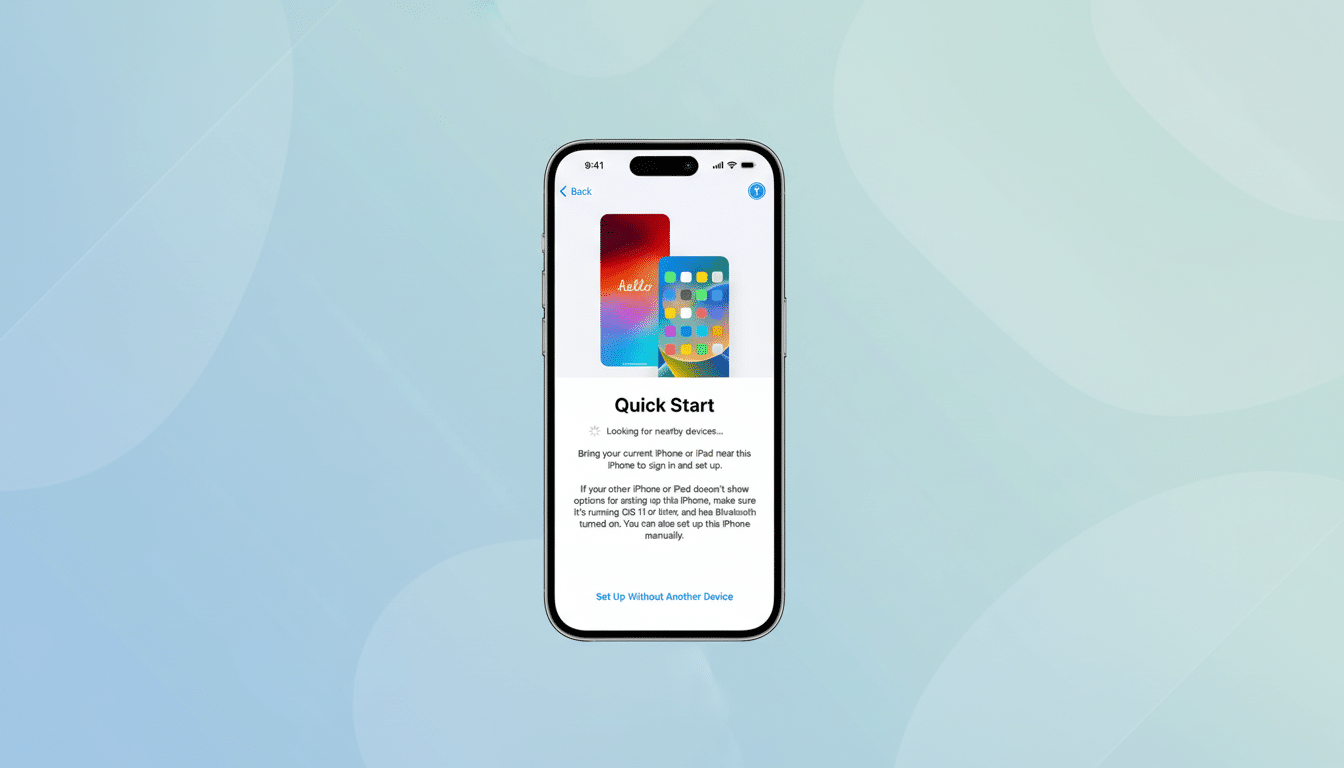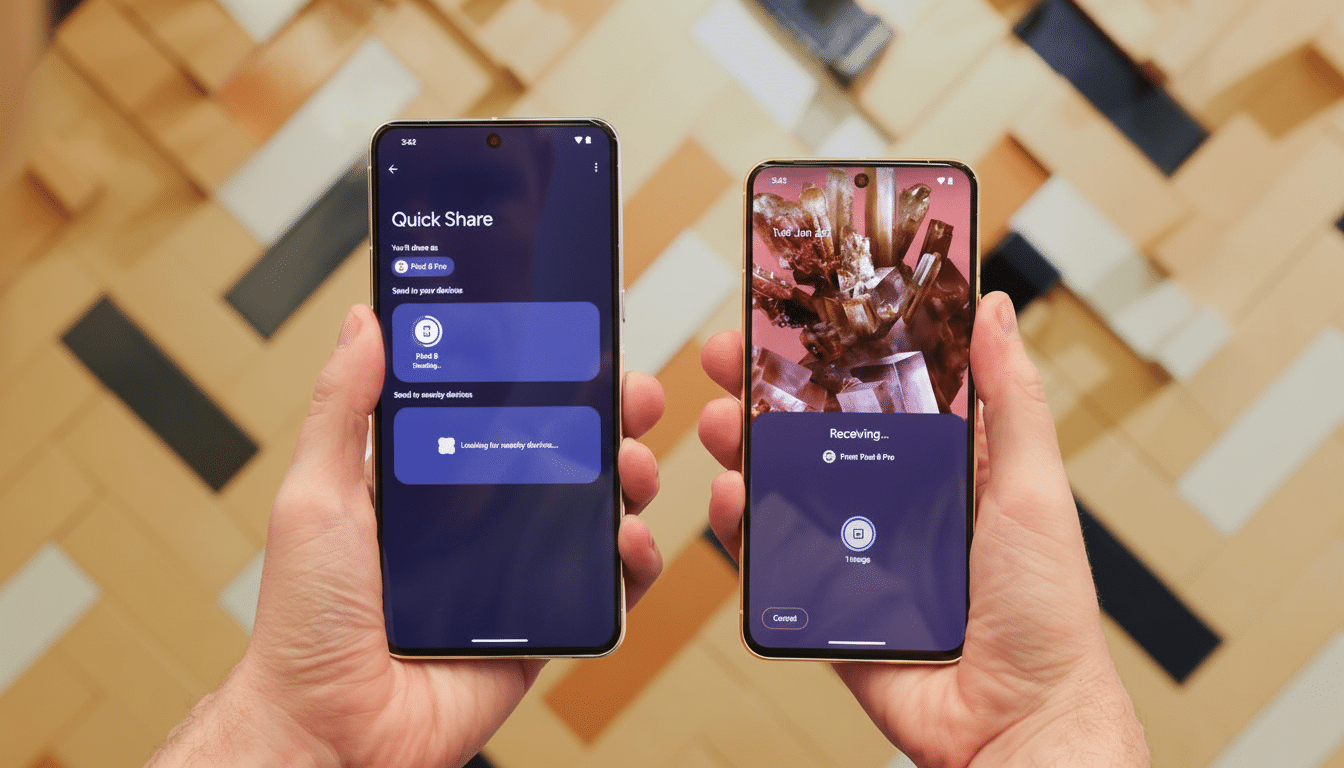The wall between Android and iPhone has never appeared less formidable.
With RCS finally making its way to Apple’s Messages app, and cross-platform file-sharing capabilities inching closer to parity with AirDrop as a result of what Google is doing with Quick Share, we appear to be moving towards a place where switching and sharing don’t punish people for their phone choices. But momentum itself will not complete the job. Here are five concrete things Google can do to break down the barrier in practice.
- 1. Make switching truly one-tap across Android and iPhone
- 2. Normalize smart home and wearables across ecosystems
- 3. Family sharing we could all share in—across platforms
- 4. A common standard for item tracking across both platforms
- 5. NFC deals on open payments and wallets across devices
- The playbook for how to finish the job between platforms

Why it matters: It’s no mystery why: Android has roughly 70% of the world’s smartphone base to iOS’ 30%, according to numerous market trackers. Families, workplaces and friend groups are already being jumbled together. Interoperability is not a gift to competitors — it’s a service to hundreds of billions of users.
1. Make switching truly one-tap across Android and iPhone
Transfers remain a mess across different platforms, especially for app states, messaging histories and eSIMs. Google might lead a cross-OS “Migration Service API” that third-party apps could adopt, which would standardize how data gets transferred in and out of iOS and Android. View it as a playbook for the industry, not a one-time wizard.
Two pain points deserve priority. First, messaging: Although the likes of WhatsApp now do their refactoring for platform transfers rather than handsets, multi-account configurations and large media histories still break all too frequently. Second, eSIMs: GSMA Intelligence indicates the rapid growth of eSIM, but transferring profiles between ecosystems remains sporadic. If Google led a reference flow, endorsed by carriers and GSMA, it might make eSIM porting as predictable as swapping between two iPhones.
2. Normalize smart home and wearables across ecosystems
Matter was designed to make home devices behave the same way no matter what ecosystem they are in. It’s progressing, but availability lags. The Connectivity Standards Alliance already boasts thousands of Matter-certified products, yet consumers continue to have to look for the logos they need. Google can help speed this up by investing in “Works Everywhere” badges, retail education and simple setup flows that treat Android and iPhone as first-class.
Wearables are the larger gap. Mainstream smartwatches tend to reserve their deepest features for their proprietary platforms. Google would also be far easier to pitch for an “Open Health Sync” project—think HL7’s FHIR but then coupled with Bluetooth SIG profiles—that would make sure core health metrics, notifications, and stuff like tap-to-pay is never different between the two devices. Interop there would be a better bump to users’ happiness than any hardware spec increase ever could be.
3. Family sharing we could all share in—across platforms
Households are, by default, mixed: an Android phone here; an iPhone there; a home full of Google devices, but a Mac in the study. Today, family features — location tracking, parent controls and shared photo libraries, calendar and to-do lists — break across platform lines.

Google could release a “Family Profile Schema” any company can use on their platform. Picture Family Link and Apple’s Family Sharing playing nice through a common spec: parents dictate screen time limits from either phone; share locations without needing to start group chats; keep one shared album that syncs across both Photos apps. Safety should be part of it, too — default alerts, cross-app approval and lost-device tools — co-developed with groups like NCMEC towards strong safeguards.
4. A common standard for item tracking across both platforms
Item trackers reveal the worst of lock-in. Apple’s Find My network and Google’s Find My Device network are huge, but they don’t talk to one another, and precise finding through UWB often becomes a walled-garden perk. Analysts predict hundreds of millions of UWB-enabled devices in circulation, but consumers can’t make use of that breadth across ecosystems.
Google invents a CSA-backed “Open Find Network System” that anyone with a certified tracker and any phone can choose to become part of the shared, privacy-preserving mesh. There are elements that should form the core of any platform — end-to-end encryption, anti-stalking protections developed in partnership with advocacy groups, and standardized UWB guidance should be table stakes. Mixed-platform families would also be able to hook, share and find tags from any device in the vicinity without losing accuracy or safety.
5. NFC deals on open payments and wallets across devices
Tap-to-pay now feels almost like muscle memory, but NFC stack access isn’t consistent throughout phones either. Google allows third-party wallets to use Android, while Apple has in the past limited tap-to-pay to its own wallet. European regulators have been driving toward greater access to NFC under the Digital Markets Act and antitrust actions, and EMVCo tokenization can deliver a proven security model to multiple wallets.
Google should also lead a global “Tap Access Charter” by banks, card networks and platform providers to create safe and non-discriminatory API access to NFC. A public test suite and certification — run by a third-party lab — would add issuer confidence and give users choice. The reward is significant in markets that have only one proprietary wallet or where such a wallet isn’t supported.
The playbook for how to finish the job between platforms
Support for RCS and more seamless cross-platform sharing have been the most excruciating cultural hurdles. Now for the plumbing: norms, certification and that unglamorous migration. And none of this asks Apple to abandon its ecosystem — just for both the giants to interface at proven, neutral layers.
If Google is pushing out the door with open specs, real-world pilots and measurable user wins — fewer failed transfers, more devices interoperating, a broader choice in the wallet — the Android-iPhone wall isn’t going to be broken down by some headline. It will quietly fall apart, brick by brick, until nobody remembers that it was there.

